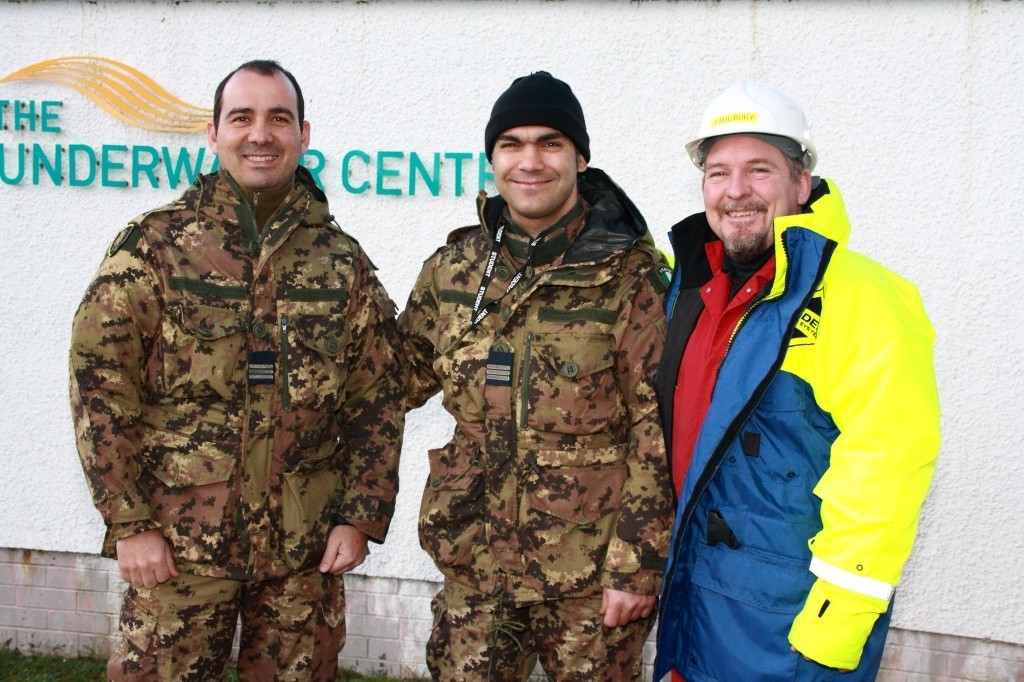
Italian air force search and rescuers travelled nearly 1,400 miles to the West Highlands for their essential subsea training.
Beniamino Panduccio, David Padula and Massimiliano Lai spent three days at the Underwater Centre in Fort William.
While there, they underwent advanced remotely operated vehicle (ROV) operations training – mostly working with the facility’s Saab Seaeye Falcon observation class ROV.
The trio are normally based at Italian air force search and rescue headquarters on the island of Sardinia.
Fort William’s Underwater Centre is well-known for subsea training for the armed forces and energy industry, and it is now seeing an increasing amount of cross-over into other sectors.
The facility is fast developing a reputation for supporting rescue teams with its tailored courses.
Last year, a group of 10 members of the Finnish coastguard completed advanced diver training at the Lochaber site – allowing them to dive offshore using a newly-acquired, multi-purpose dynamic positioning vessel.
A number of their colleagues are due to attend similar training at the Underwater Centre later this year.
The UK’s first sub-surface search and recovery team – the Norfolk Fire and Rescue Service, which was set up as a dedicated flood disaster response unit – also train regularly at the site.
During their stay, the Italian team learned about mapping, measuring and navigation using sonar in preparation for operating in difficult conditions, including zero light and poor visibility, as well as practising search and recovery.
The trainees used the centre’s dive vessel, the Loch Sunart, for operating the Seaeye Falcon in Loch Linnhe.
They also spent time diving about 150ft to the bottom of the sea loch in pitch-black conditions, and took part in a mock rescue.
Underwater Centre ROV training manager Paul Bury said: “The three days were quite a challenge as they were doing things they had never done before, which was the main point of them being here.
“They got through it all well and the underwater conditions didn’t disappoint – there was zero visibility, which is exactly what they wanted and needed in order to train properly in real-life conditions.”
Mr Lai said: “We have learned a lot in a short time, in particular from our instructor Paul, and we are very satisfied with the level of care and safety that out team was shown.”